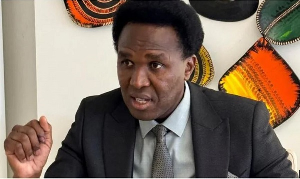In a bid to recover their debt, Bulk Oil Distributors are working on rolling-out a credit rating system that will determine the credit-worthiness of Oil Marketing Companies.
Senyo Hossi, lobbyist for the fuel importers, said they are working toward the first week of next month to roll out the system, whereby the OMCs will be rated based on their credit history.
“So we will put them in tier-one, tier-two, tier-three and tier-four. So if you are a tier-four customer, the industry knows you are a tier-four customer. They will not give you the same credit t they will give a tier-one customer,” he told the B&FT.
The Bulk Oil Distributors (BDCs), he said, will equally be rated to monitor how they are complying with the system.
“So if you are a BDC and you are not following the CREPT standard, you will be rated and it will affect your credit because your bank will see you as a higher risk...If your receivables are dodgy, your bank is heavily exposed. If you are a lower compliance rated BDC, it means that your receivables profile is likely to be dodgy. So anybody lending to you will think twice.”
The BDCs have been struggling to recover some GH¢1billion debt from the Oil Marketing Companies. The difficulties have compelled them to sell products on cash-and-carry basis in recent times.
Senyo Hossi said while debt collection has improved in recent times due to fuel shortages, a lot remains to be collected.
The BDCs are equally demanding about GH¢1.3billion from government in respect of forex exchange losses. While government has released US$150 to the BDCs, it has asked Ernst and Young to audit the claims.
Senyo Hossi said completing the price liberalisation process would be key to resolving the nagging issues in the petroleum downstream sector, and would save government the sweat of incurring so much cost.
Regulator of the downstream sector, the National Petroleum Authority, has been asking government to allow it to implement the pricing mechanism based on the petroleum pricing formula.
Although the NPA reviews prices every two weeks, monthly and quarterly, based on prices on the international market and the performance of the cedi, prices are not adjusted as often, leading to what industry players see as uncompetitive prices.
As part of efforts to deregulate or remove government control from the downstream petroleum sector and allow market forces to determine prices, the NPA is considering phasing out the maximum indicative price it sets -- above which distributors cannot go.
As the companies compete on a free market basis, the NPA hopes prices can vary to the advantage of consumers, or at least prices will not be the same across the country.
Otherwise, once the NPA sets the maximum indicative price, all the companies aim for the maximum.
Click to view details



Business News of Thursday, 18 September 2014
Source: B&FT

















